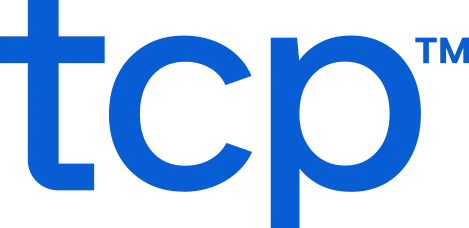Imagine it’s Friday night at a bustling hotel.
The dinner rush is in full swing, a conference in the ballroom just let out, and two front desk agents just called out with no backups scheduled. Meanwhile, the housekeeping team is still catching up on a large surprise early check-in group.
The restaurant is short a server, the valet line is backing up , and maintenance just got pulled to handle an urgent request. Every manager is making quick adjustments, asking who can stay late, who can switch, and how to cover the next wave of guests.
Scheduling is hospitality, there’s no way around it.
Whether you oversee a boutique inn, a national resort, a neighborhood restaurant, a country club, recreational center or an event space, employee scheduling in hospitality sits at the heart of service quality, compliance, and profitability.
This guide takes a clear look at how to schedule hospitality staff in a world where guest demand shifts by the hour. You’ll find challenges unique to various roles and industries, practical fixes, and a simplified checklist with proven best practices to help you manage the expected and the unexpected.
The challenges of employee scheduling in hospitality
If you’re reading this, you already know. Employee scheduling in hospitality is a constant balancing act.
Every day, managers weigh guest demand, staff availability, and labor rules while aiming to deliver memorable guest experiences. A single experience can lead to a glowing five-star review or a public complaint on TripAdvisor, Yelp, or Google, delivering consistent.
So, high-quality service is everything. That level of service depends heavily on having the right people in the right roles at the correct times. Even one misstep — like being understaffed during a rush or overworking a burned-out team — can lead to longer wait times, slower check-ins, or poor customer service interactions.
First, we’ll review the biggest obstacles hospitality managers face when building employee schedules, then we’ll break down the challenges for scheduling for hospitality by function, with context on what’s relevant for each role.
Compliance and labor law challenges
Hospitality employers navigate an intricate legal landscape. The Fair Labor Standards Act (FLSA) sets national wage and overtime standards, but many cities and states go further.
Here are a few labor law examples relevant to hospitality:
- California requires a 30-minute unpaid meal break for shifts over five hours and a second break after 10 hours, a common scenario during event-heavy weekends.
- Illinois mandates that employees working 7.5+ hour shifts receive a 20-minute meal break within the first five hours.
- Seattle and New York City have predictive scheduling laws that require employers to provide work schedules in advance and compensate for last-minute changes.
Violations aren’t rare. In 2023, several Florida hotels were fined over $60,000 for unpaid overtime and inaccurate scheduling records. Beyond fines, these lapses damage employer reputation — and talent retention.
Employee satisfaction and retention risks
Hospitality turnover often exceeds 70% annually, with hourly front-line roles climbing as high as high as 80% for hourly front-line roles.
Inconsistent scheduling is a major driver in this. No employee wants to deal with unpredictable hours or back-to-back clopenings , burnout follows. For many workers juggling school or caregiving, schedule instability is the a deal-breaker.
But flip this scenario. When you give people visibility into their schedules and input into swaps or availability, they stay longer and perform better. A well-planned schedule tells employees their time is valued
When people feel valued, they show up stronger. They’re more likely to stay, willing to pitch in during busy times, and more motivated to deliver excellent service. And in hospitality, you know that kind of engagement isn’t just a morale booster, but a service booster too (the kind that earns five-star reviews).
Balancing labor costs and service quality
Labor is your largest controllable expense and your most powerful differentiator. The right schedule keeps service consistent and labor consistent with demand:
For hotels, this means adjusting front desk and housekeeping based on check-in patterns and occupancy forecasts. For restaurants, aligning kitchen and waitstaff hours with reservation trends. For entertainment venues, matching event calendars with labor capacity.
Manual scheduling via spreadsheets can’t keep pace with those variables. Without real-time visibility into hours, overtime, and costs, you’re reactively adjusting schedules instead of strategically setting them. How these challenges play out depends on the team. Scheduling looks one way in the kitchen, another at the front desk, and completely different at the corporate level. Here’s how each role experiences it:
The challenges of employee scheduling in hospitality per role
Every department in hospitality has its own scheduling puzzle to solve. What works for housekeeping won’t fit food service, and what keeps a front desk running smoothly might not translate to the banquet team. Each role faces unique pressures — from variable demand and guest expectations to staffing ratios and labor compliance — all of which shape how schedules are built and managed.
Let’s take a closer look at how these challenges unfold across key functions.
Facility and site management
Site leaders keep the property running when demand shifts by the minute. People jump in where they’re needed, which creates constant schedule changes, coverage decisions under pressure, and last-minute edits.
| Challenge | Why it matters in employee scheduling for hospitality |
| Manual schedule changes during and after shifts | Schedules rewritten under pressure increase errors and confusion, making labor tracking and shift coverage harder to manage. |
| Overtime approaching during busy periods | Small extensions to cover rooms or events add up, pushing labor over budget without proper approval or visibility. |
| Last-minute break adjustments | Late or missed breaks can violate employee break laws and reduce recovery time for employees working long shifts. |
| Inconsistent end-of-day approvals | If supervisors don’t verify schedules daily, coverage issues and unapproved overtime can go unnoticed. |
Food & beverage management
Service moves fast, whether you’re fast food, full service, or catering. Managers balance staffing for peak dining periods while supporting fair scheduling, legal breaks, and labor budgets.
| Challenge | Why it matters in employee scheduling for hospitality |
| Too much time spent building schedules manually | Managers spend hours each week building spreadsheets that can’t adapt when reservations shift or callouts happen. |
| In-shift task changes between tipped and non-tipped roles | Servers who move between sections or help with prep can trigger blended-rate pay and compliance issues if scheduling isn’t tracked accurately. |
| Schedules that don’t reflect real rush patterns | Without data from other systems, managers risk overstaffing during slow times and short-staffing during peaks. |
| Missed meal or rest breaks during service rushes | Skipping breaks leads to penalties in some states and increased burnout for staff under pressure. |
Operations and general management
Operations leaders must balance fatigue with fulfillment. Scheduling has to meet compliance requirements while keeping labor aligned with demand to balance standards with property realities.
| Challenge | Why it matters in employee scheduling for hospitality |
| Uneven scheduling rules across departments | Different scheduling habits between departments lead to inconsistent labor costs and policy enforcement. |
| Fixing schedule errors after shifts | Reconstructing who worked and when is time-consuming and leads to disputes if changes weren’t approved in real time. |
| Reviewing recurring coverage gaps | Repeated shortages signal poor forecasting and limit your ability to plan for future events or surges. |
| Overreliance on manual spreadsheets | Spreadsheets don’t scale or alert managers to compliance risks, leaving operations vulnerable during audits. |
Guest experience and front office/customer service
Front-of-house teams move fast and are first to keep guests happy. Managers make quick scheduling calls on coverage, breaks, and shifts to keep lines short and service flowing.
| Challenge | Why it matters in employee scheduling for hospitality |
| Unplanned overtime to protect service | Quick decisions to extend shifts keep guests happy short-term but drive up labor costs long-term. |
| Break coverage versus desk coverage | Meeting break rules while keeping the front desk or phones staffed is a daily tradeoff that can create compliance risks. |
| Limited time to verify shift swaps | Without centralized scheduling, swaps can lead to double bookings or unapproved time off. |
| Poor communication about scheduling policies | Lack of clarity on procedures for swaps or changes creates confusion and lowers morale. |
Scheduling and payroll oversight
Payroll is only as accurate as your schedules. When shifts aren’t approved or updated on time, small errors snowball into delays, cost overruns, and compliance problems.
| Challenge | Why it matters in employee scheduling for hospitality |
| Too much manual data entry across systems | Disconnected scheduling and systems increase payroll errors and slow processing. |
| Frequent last-minute edits before payroll | Late updates to schedules create mismatched hours and confusion for payroll teams. |
| Lack of approval tracking | Without clear audit trails, it’s difficult to verify who authorized changes or overtime. |
| High turnover leading to scheduling gaps | When new hires or seasonal staff rotate frequently, manual scheduling becomes error-prone and time-consuming. |
Multi-site operations
Managing multiple properties multiplies scheduling complexity. Leaders must balance staffing levels, local labor law compliance, and brand standards without being on-site at every location.
| Challenge | Why it matters in employee scheduling for hospitality |
| Limited visibility into daily staffing choices | Regional leaders struggle to spot overtime risks or understaffing until it’s too late. |
| Inconsistent policy adherence across locations | Different managers interpret scheduling rules differently, increasing brand and compliance risk. |
| Different features or processes by site | Fragmented systems make it difficult to compare performance or track total labor costs. |
| Supporting managers remotely | Leaders need clear, consistent scheduling processes to maintain coverage without micromanaging. |
Employee scheduling checklist for hospitality
You want to balance service quality, compliance, and labor costs? Scheduling in hospitality is either your enabler or blocker
You want to show both your guests and your employees that their time matters? A strong scheduling routine keeps shifts covered, guests happy, and turnover low.
Use this checklist and best-practice guide to tighten your scheduling process and strengthen your team culture.
☑ Align schedules with demand data – Use booking, reservation, or event data to forecast staffing before each week starts. Plan ahead of seasonal surges instead of reacting to them.
☑ Follow labor laws and promote fairness – Rotate weekends and holidays, distribute shift schedules evenly, and stay compliant with overtime, break, and predictive scheduling laws.
☑ Post and communicate schedules early – Share schedules at least two weeks in advance (in compliance with Fair Workweek laws in many parts of the country) so staff can plan their lives and reduce last-minute stress.
☑ Empower employees to manage their time – Let staff self-service time off requests, shift swaps, and availability updates to reduce errors and friction.
☑ Cross-train for flexibility – Develop multi-skilled employees who can fill in across roles and departments to keep service steady when demand shifts.
☑ Build a reliable backup plan – Keep a standby roster of trained, part-time, or on-call employees who can cover callouts or unexpected surges (without pressing you into overtime).
☑ Minimize last-minute schedule changes – Avoid frequent edits and communicate all changes clearly through one scheduling solution to maintain consistency and trust.
☑ Track labor spend in real time – Use integrated scheduling features that connect to your other existing systems to monitor labor costs and adjust proactively.
☑ Systemize recurring tasks and compliance – Automate the manual work of breaks, overtime alerts, and recurring shifts to stay consistent and compliant.
☑ Listen to feedback and adapt – Regularly ask for employee input on schedules and shift patterns to catch small issues before they impact employee retention.
☑ Prepare for emergencies – Maintain an contingency coverage plan with shift alerts and real-time visibility into who’s available to fill gaps quickly.
Why manual scheduling doesn’t cut it for hospitality
Whether you call them customers, visitors, or guests, they expect the best.
The pace of hospitality leaves little room for outdated systems. Managing schedules by spreadsheet, whiteboard, or text chain might seem easy at first — until the first callout, overbooked shift, or unplanned rush hits.
Then it becomes a scramble. Then customer expectations aren’t being met.
Manual scheduling is slow, error-prone, and reactive. It can’t adapt when occupancy shifts, reservations surge, or an employee calls out. Managers have to rewrite schedules midweek, track hours by memory, and approve changes after the fact. Meanwhile, staff lose visibility into their hours and start to burn out from the uncertainty.
Without connected data or real-time updates, you can’t see where labor is trending, spot overtime before it happens, or forecast coverage with accuracy. No visibility means lower efficiency and consistency, which impacts both your team and your guests.
What a better scheduling system looks like
A stronger approach to scheduling replaces reactiveness with readiness. Real-time data helps you anticipate busy periods, adjust staffing across departments, and keep service steady without guesswork.
So, here’s what that looks like in a modern scheduling for hospitality operations:
- Demand-based shift planning – Use reservation, occupancy, or event data to forecast staffing before each week starts.
- Instant visibility and updates – Track coverage in real time and fill open shifts fast when someone calls out.
- Mobile access for staff – Let employees view schedules, request time off, or swap shifts from their phones.
- Compliance tracking built in – Automatically manage break times, rest periods, and overtime limits by state or city.
- Cross-department coordination – See where roles overlap across housekeeping, F&B, and front desk to reduce redundancy and avoid overstaffing.
If you don’t have these capabilities, then you’re likely dealing with the challenges we discussed earlier.
Easier scheduling? That’s a want. More predictable, transparent, fair scheduling that doesn’t feel like a full-time job? That’s a need.
Turn hospitality scheduling into a strength, not a scramble
You can’t eliminate unpredictability in hospitality, but you can build a scheduling process that can roll with the punches.
Smarter scheduling doesn’t start with technology, but rhythm. A consistent structure where data, communication, and flexibility work together. When your team knows where they stand, managers spend less time chasing coverage, and guests get the seamless experience they expect.
If scheduling still feels like controlled chaos, start small.
Try posting schedules earlier, asking for team input, or aligning shifts with demand data. Each small improvement adds up with fewer missed shifts, less burnout, and smoother days for everyone involved.
If you’re stuck in a scheduling system that isn’t cutting it, it might be time for a new approach.
Employee scheduling software was built for fast-paced environments i.e. anything your hospitality organization might encounter on any given day. With a dedicated solution, you’re officially making the shift from reactive to proactive scheduling: matching coverage with optimal staffing, keeping teams in sync, and as always, creating exceptional service for guests..
TCP Software’s employee scheduling and time and attendance solutions have the flexibility and scalability to suit your business and your employees, now and as you grow.
From TimeClock Plus, which automates even the most complex payroll calculations and leave management requests, to Humanity Schedule for dynamic employee scheduling that saves you time and money, we have everything you need to meet your organization’s needs, no matter how unique. Plus, with Aladtec, we offer 24/7 public safety scheduling solutions for your hometown heroes.
Ready to learn how TCP Software takes the pain out of employee scheduling and time tracking? Speak with an expert today.



